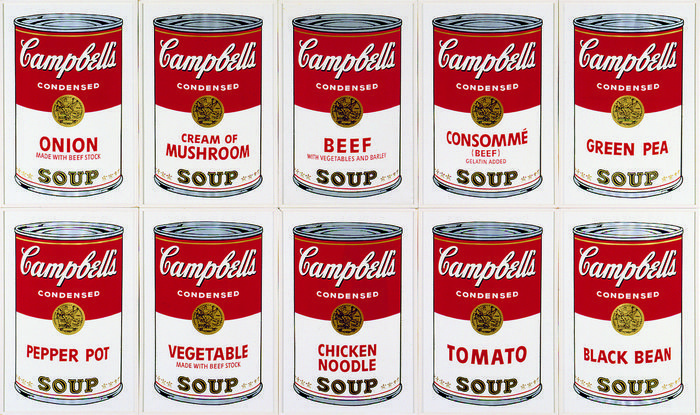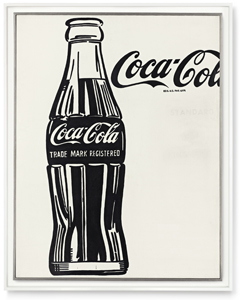
Andy Warhol, born 6th August 1928, was an American artist and a leading figure, a beacon, in the Pop Art movement and was one of the most influential artists of his generation with his influence still felt today. He was known to have a nervous disorder as a child and spent a lot of time at home where he would listen to the radio and collect pictures of movie stars. This exposure to the media is said to have caused him to obsess over pop culture and celebrity which dominates his work and process. In 1945 Warhol began his training in Pictorial Design at the Carnegie Institute of Technology in Pittsburgh and shortly after he graduated in 1949, he moved to the city of New York to become a commercial Illustrator. He had success throughout the 1950’s working for well-known magazines such as Vogue and the New Yorker as well advertisement displays for local businesses.
The 1960’s was the most prolific period of Warhol’s life. In 1960 he moved out of his shared family apartment into a townhouse on Lexington Avenue in Manhattan which gave him the opportunity to have space to work. His work began to incorporate advertisements and comic strips. This was the forming of early examples of Pop Art. His work became more expressive and painterly with clearly recognisable brushstrokes and loose influences of Abstract Expressionism.

Warhol continued with his theme of advertisement and comic strips throughout the early 1960’s focusing on illustrated imagery mainly from printed media and graphic design. In 1964, Warhol rented an old fire station using this additional new space to further his work at a scale he could not achieve before. For his large scale canvases he would project his work onto the walls and freehand trace the images using paint directly onto a canvas resulting in a continuation of his painterly style. By 1964 works such as ‘Brillo Box’ would be a counterpoint to this style and to abstract expressionism by almost stripping away brush strokes completely.

Throughout 1961 and 1962 Warhol’s work became increasingly commercialised using mass production techniques such as silk screen printing to quickly replicate his drawings of mundane household brands, such as the famous ‘Campbell’s Soup Cans’ series (1962). Andy Warhol’s work became controversial at the time as it was questioning the very definition of what is art.
